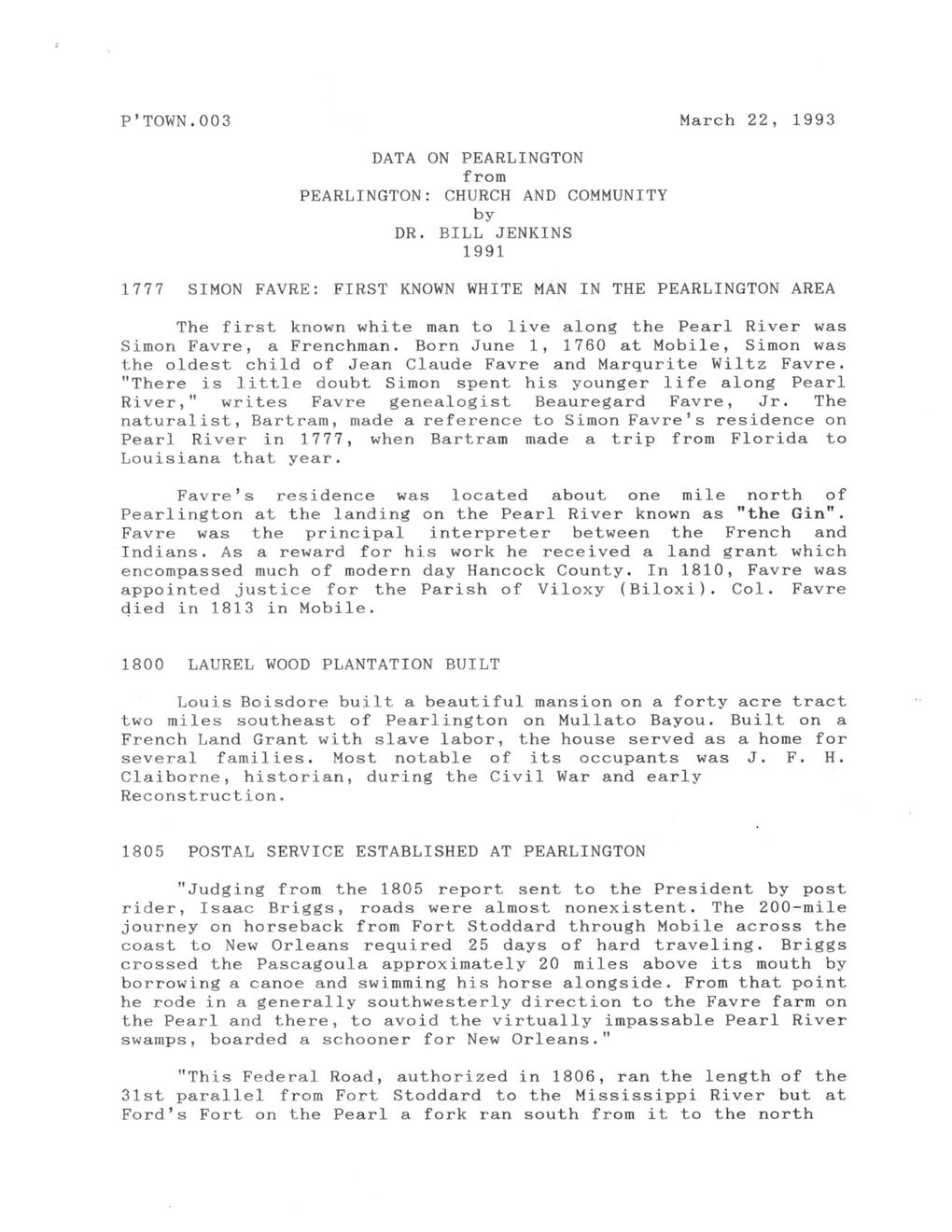This text was obtained via automated optical character recognition.
It has not been edited and may therefore contain several errors.
P’TOWN.003 March 22 , 1993 DATA ON PEARLINGTON from PEARLINGTON: CHURCH AND COMMUNITY by DR. BILL JENKINS 1991 1777 SIMON FAVRE: FIRST KNOWN WHITE MAN IN THE PEARLINGTON AREA The first known white man to live along the Pearl River was Simon Favre, a Frenchman. Born June 1, 1760 at Mobile, Simon was the oldest child of Jean Claude Favre and Marqurite Wiltz Favre. "There is little doubt Simon spent his younger life along Pearl River," writes Favre genealogist Beauregard Favre, Jr. The naturalist, Bartram, made a reference to Simon Favre’s residence on Pearl River in 1777, when Bartram made a trip from Florida to Louisiana that year. Favre’s residence was located about one mile north of Pearlington at the landing on the Pearl River known as "the Gin". Favre was the principal interpreter between the French and Indians. As a reward for his work he received a land grant which encompassed much of modern day Hancock County. In 1810, Favre was appointed justice for the Parish of Viloxy (Biloxi). Col. Favre died in 1813 in Mobile. 1800 LAUREL WOOD PLANTATION BUILT Louis Boisdore built a beautiful mansion on a forty acre tract two miles southeast of Pearlington on Mullato Bayou. Built on a French Land Grant with slave labor, the house served as a home for several families. Most notable of its occupants was J. F. H. Claiborne, historian, during the Civil War and early Reconstruction. 1805 POSTAL SERVICE ESTABLISHED AT PEARLINGTON "Judging from the 1805 report sent to the President by post rider, Isaac Briggs, roads were almost nonexistent. The 200-mile journey on horseback from Fort Stoddard through Mobile across the coast to New Orleans required 25 days of hard traveling. Briggs crossed the Pascagoula approximately 20 miles above its mouth by borrowing a canoe and swimming his horse alongside. From that point he rode in a generally southwesterly direction to the Favre farm on the Pearl and there, to avoid the virtually impassable Pearl River swamps, boarded a schooner for New Orleans." "This Federal Road, authorized in 1806, ran the length of the 31st parallel from Fort Stoddard to the Mississippi River but at Ford’s Fort on the Pearl a fork ran south from it to the north

Pearlington City Document (053)